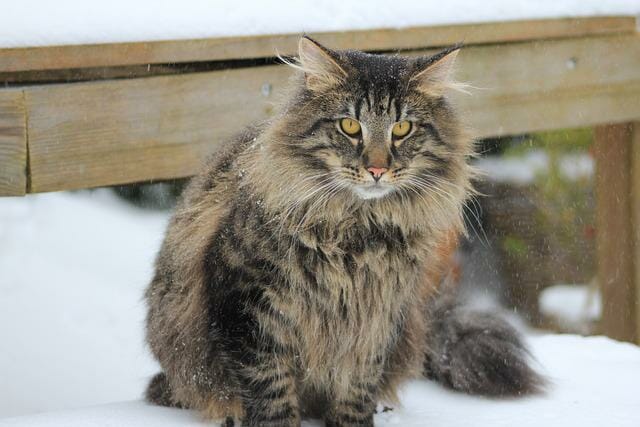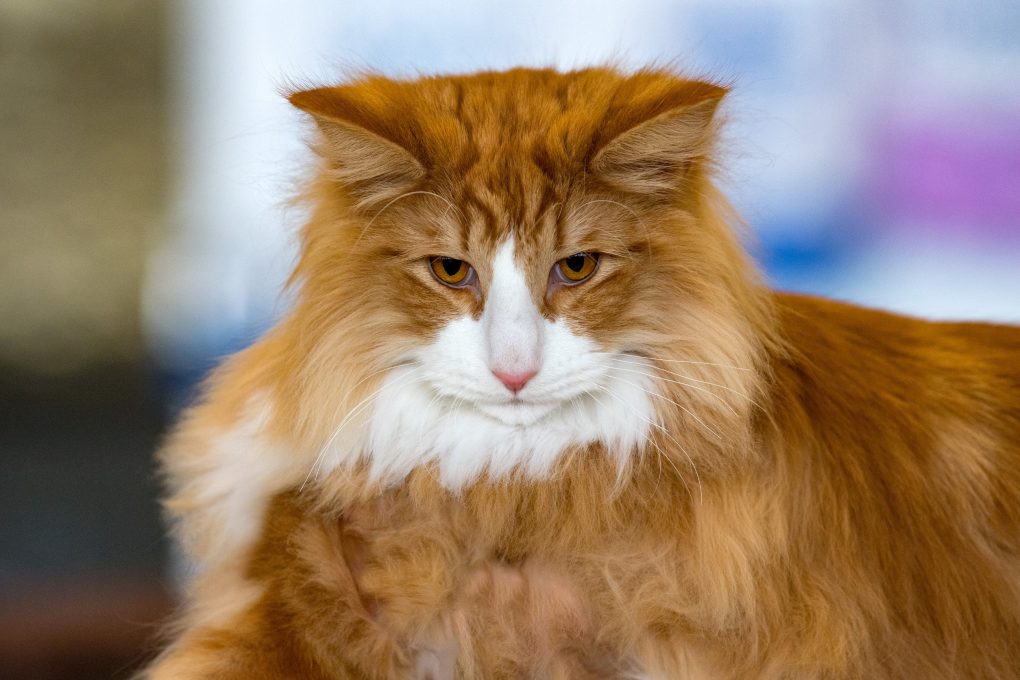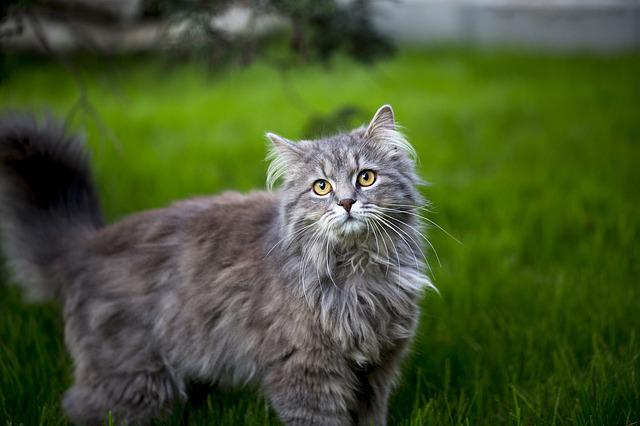Can You Shave a Norwegian Forest Cat: Everything You Should Know Before Shaving a Norwegian Forest Cat
Yes, it is technically possible to shave a Norwegian Forest cat; however, it is not recommended unless necessary for medical reasons. The Norwegian Forest cat’s long and thick fur helps regulate its body temperature. It provides insulation in cold weather, so they are well-suited to its native Scandinavian climate.
Shaving a Norwegian Forest cat can disrupt its natural fur growth cycle and potentially cause discomfort or skin irritation. Additionally, their fur may need to grow back properly or take a long time. For example, suppose you have concerns about your cat’s fur or grooming needs. In that case, it’s best to consult a veterinarian or a professional cat groomer who can provide appropriate guidance and care for your cat’s needs.


Table of Contents
The Risks of Shaving a Norwegian Forest Cat
Skin Irritation
Shaving removes the cat’s protective fur coat, exposing its skin to the environment. This can cause skin irritation and dryness, especially if the cat has sensitive skin. Without the protection of their fur, a cat’s skin is more susceptible to friction from contact with surfaces such as carpets or furniture. This can cause rubbing, scratching, and irritation.
The Norwegian Forest cat’s fur protects its skin from the sun’s harmful rays. Shaving can expose the skin to direct sunlight, leading to sunburn and further irritation.
As the fur grows back after shaving, it may become ingrown, causing irritation and potentially leading to infections. Also, grooming products used during shavings, such as shaving cream or disinfectants, may cause skin irritation and further discomfort for the cat.
Coat Damage
The fur of a Norwegian Forest cat grows in layers and takes a long time to regrow after being shaved. During this time, the fur may grow back unevenly, leaving shorter or longer patches than the surrounding fur. This can cause the coat to look uneven and unattractive.
The texture of the fur may change after being shaved, as the new hair may be coarser or softer than the original fur. This can affect the coat’s insulating properties and make it harder for the cat to regulate their body temperature.
Shaving can also cause the fur to become brittle and prone to breakage. This can result in a dull coat and a lack of natural shine. After being shaved, the fur may be more prone to matting and tangling. This can be uncomfortable for the cat and require additional grooming to prevent further matting and coat damage.
Shaving can damage the hair follicles, making weaker, brittle fur more prone to breakage and matting. This can make it harder for the coat to regrow evenly, leading to further damage in the long run.
As the fur grows back after being shaved, it may become ingrown and cause skin irritation and potential infections. This can further delay the regrowth of the coat and lead to additional health issues for the cat.
Emotional Stress
A cat’s fur coat provides security and comfort, and removing it can cause stress and anxiety. In addition, the cat may feel vulnerable and exposed without fur, increasing stress levels.
Shaving can cause discomfort for the cat, as the process can be loud and uncomfortable and may cause pulling or tugging on the skin. The cat may associate this discomfort with shaving and become anxious or stressed when seeing grooming tools or the groomer.
Having can significantly alter a cat’s appearance, which can be stressful for the cat and its owner. For example, the cat may feel self-conscious or uncomfortable with their new appearance, and their owner may worry that the cat is no longer as attractive or desirable.
Suppose the cat has a negative experience during shaving, such as being nicked or cut by the razor or experiencing pain. This can cause emotional trauma and anxiety lasting long after the grooming session.
Some cats become anxious or stressed when separated from their owners, and being taken to a grooming appointment and left alone can exacerbate these feelings. This can make the cat more anxious during grooming and may lead to behavioral problems in the future.
Situations Where Shaving a Norwegian Cat Is Necessary


Medical Procedures
There are certain medical procedures where shaving a Norwegian Forest cat may be necessary or recommended. For example, if a Norwegian Forest cat needs to undergo surgery, it may be necessary to shave the fur where the incision will be made. This allows the veterinarian to see and access the surgical site, which is important for ensuring a successful procedure and minimizing the risk of complications.
If a Norwegian Forest cat has a skin condition that requires treatment, such as a fungal infection or hot spots, shaving the affected area may be necessary. This allows for better access to the skin and allows the medication to be applied more easily and effectively.
Also, if a Norwegian Forest cat has a severe infestation of fleas, ticks, or other parasites, shaving may be necessary to remove the insects and prevent further infestation.
Shaving a Norwegian Forest cat may be necessary to ensure its health and well-being. However, it is important to minimize the potential risks and discomfort associated with shaving, such as using a professional groomer, providing a comfortable and calm environment, and monitoring the cat’s behavior and emotional state during and after the grooming session.
Severe Matting
Shaving a Norwegian Forest cat may be necessary for severe fur matting. Matting occurs when tangles and knots become tightly entwined, creating clumps of matted fur that can be uncomfortable and even painful for the cat. Here are some reasons why shaving may be necessary for severe matting:
Severe matting can be uncomfortable and even painful for the cat, as the matted fur can pull on the skin, causing irritation and inflammation. Shaving matted fur can provide immediate relief from this discomfort and prevent further irritation.
Severe matting can lead to skin irritation, infection, and other skin problems. When the fur is matted, it can trap dirt, debris, and moisture against the skin, creating an environment conducive to bacterial and fungal growth. Shaving the fur can help to prevent and treat these skin problems.
When the fur is severely matted, combing or brushing out the tangles and knots can be difficult. Shaving the fur can help to remove the matting quickly and easily, allowing for better grooming and maintenance of the cat’s coat.
Once a cat’s fur becomes severely matted, it is more likely to continue matting and tangling, even with regular grooming. Shaving the fur can remove the matted sections and prevent further matting.
It is important to note that shaving a Norwegian Forest cat for severe matting should be done with care and by a professional groomer or veterinarian, as there is a risk of cutting the skin if not done properly. After shaving, monitoring the cat’s skin for any signs of irritation or infection and providing regular grooming and maintenance to prevent future matting is important.
Extreme Heat


Norwegian Forest cats are adapted to cold climates and may struggle to cope with high temperatures. If a Norwegian Forest cat is exposed to extreme heat for a prolonged period, it may develop heatstroke, which can be life-threatening. Shaving the fur can help the cat to regulate their body temperature more effectively and prevent heatstroke.
Maintaining a Norwegian Forest cat’s long and thick coat can be difficult in hot weather, as the fur can become matted and tangled more easily. Shaving the fur can help to prevent matting and make grooming easier and more effective.
Combining heat and moisture can create an environment conducive to bacterial and fungal growth in hot weather. This can lead to skin problems such as hot spots and fungal infections. Shaving the fur can help to prevent these problems from developing and promote better skin health in hot weather.
